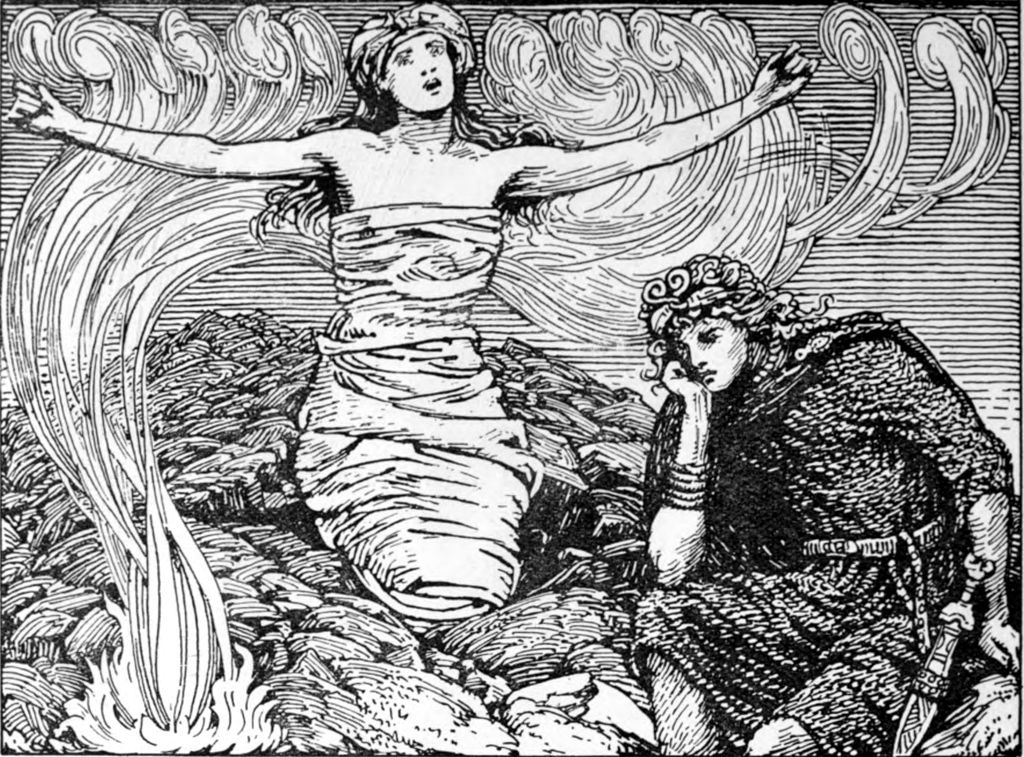The three types of basic magic found in Norse mythology include seiðr, galdr, and Runic magic. Galdr is an incanatation; seiðr was more similar to a ritual; Runic magic incorporated runic inscriptions to heal, cast spells on enemies, or protect in battle.
The Gods like Odin and Thor in Old Norse sagas used these types of magic. They were also used by the Vikings and the Germanic people of Iceland and Scandinavian countries in the Pre-Christian period in Northern Europe.
It was primarily used to gain an edge in battle, heal, and draw strength from the gods.
What is Galdr
Simple put, galdr is an incanatation. If you translate the word Galdr from old Norse, it means to crow, yell, or chant. Chants or invitations were used for various reasons, from medicinal healing to spells against enemies. These chants were typically in a poetic format called, Galdralag.
While galdr was crucial to pre-Christian Vikings, it also provides us with many written-down records of these invitations that tell us a lot about the lives of the Vikings and the types of spells they used in their everyday lives. Some chants were love spells, while others were used to heal a horse’s broken leg.

What is Seiðr
Unlike galdr, there isn’t as much known about seiðr. The practice of galdr provides many documented incantations that are preserved and translated and survive today. Seiðr was more similar to a ritual, and there isn’t much written about this mysterious pre-Christian Viking practice.
What we do know about seiðr is that it utilizes Shamans to conduct these rituals, and they included primarily female shamen called völvas. These rituals incorporate drums and rattles, singing, and staff to call on the spirits of the Norse gods.
Seiðr sounds very similar to a modern church service, but these practices pre-dated Christianity in the region. Seiðr was often conducted outdoors, and shamen traveled to different areas. In the Nordic regions, kings or chieftains paid shamen to conduct seiðr in their villages.
Think of seiðr shamen like tarot card readers. They advised the people who visited their ritual and gave them insight into their future.

What is Runic Magic
Runic magic incorporated runic inscriptions to heal, cast spells on enemies, or protect in battle.
In the Poetic Edda, Odin was so eager to learn the magic of the runes that he hung himself from Yggdrasil until he understood their meaning. Elder Futhark runes or talismans were carved into pieces of wood or onto the weapons of Vikings to aid in battle.
Tyr, the god of war, was often carved onto Viking swords and shields to ensure victory in battle. In addition to Tyr, other carved runes include Odin’s ravens or Thor’s hammer.
![Norse Magic: Seiðr, Galdr, and Runic Magic 4 The inscription on the Kylver stone ends with a stacked bind rune combining six Tiwaz runes used to invoke the god Tyr and four Ansuz runes to invoke the Æsir.[3]](https://norsemythologist.com/wp-content/uploads/2022/11/Kylverstenen_futhark.jpg)
Did the Vikings Believe in Magic?
Yes, the Vikings very much believed in magic.
Remember, Norse Paganism shares much in common with modern religions. Using magic, whether incantations, runes, or rituals, was the way for the Germanic people to speak to their gods.
Much like prayer, the Vikings that followed Norse religion used these magical techniques the call upon the Norse gods for strength and protection.
What Kind of Magic did Odin Use?
Odin used rune magic and paid dearly for the ability.
While Odin sat next to his wife, Freyja, he looked out over the world and was overcome with the desire for the power of the sacred runes.
As depicted in the poem Hávamál in the Poetic Edda, Odin cut out his eye and hung himself from the branches of Yggdrasil until the secret of the runes revealed itself to him. On the ninth day, Odin gained the power of the runes.
Modern Norse Magic
The modern practice of Norse magic is referred to as Asatru, Heathenry, or Norse Wicca. Those that actively practice Asatru are also called Wiccans.
This pagan religion was mostly lost to time, especially when Christianity took hold in the regions of Scandinavia and Northern Europe. It was in the 1970s that Norse Paganism became a recognized legal religion in Iceland.
Modern practices of seiðr, galdr and runic magic are used to practice Norse pagans to speak and draw strength and insight from Norse gods.

